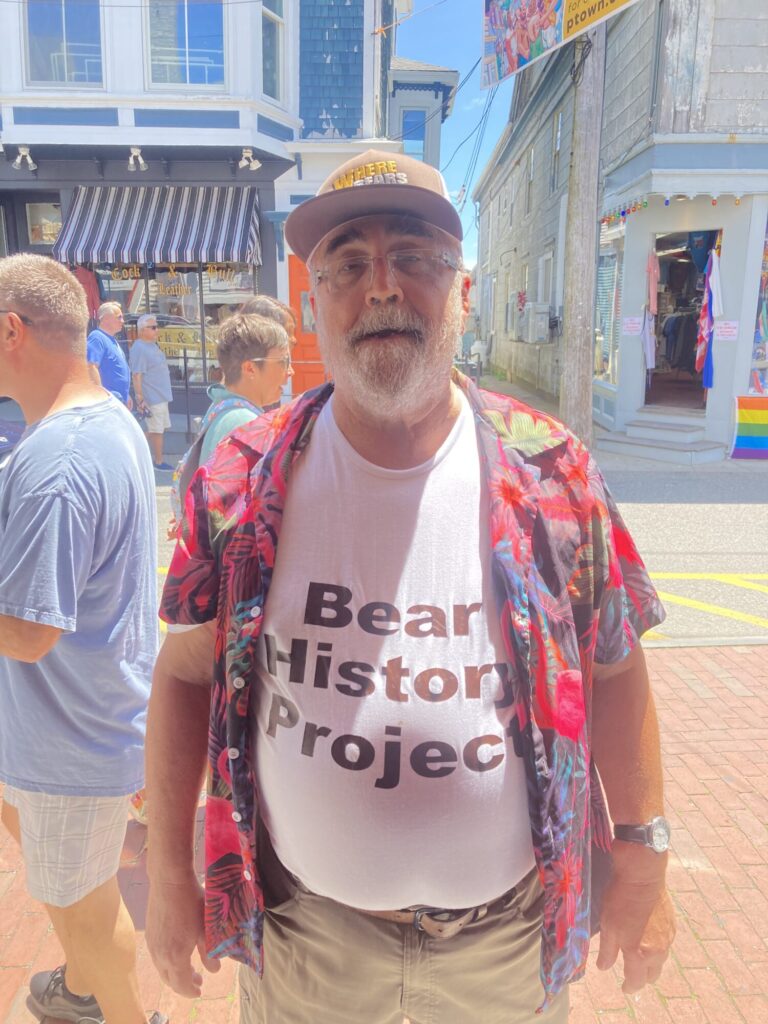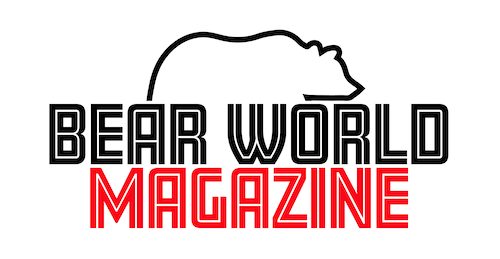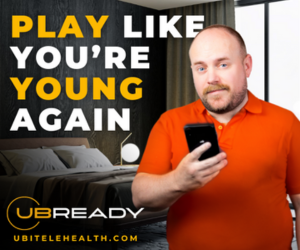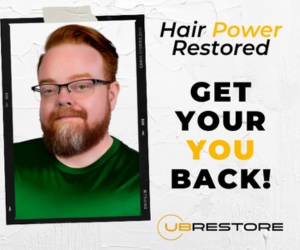Les K. Wright on the Past, Present, and Future of the Bear Community
The Bear World Magazine Icon honoree for 2024 is Les K. Wright. Get to know about him and his work in our exclusive interview.
Members of the bear community will know Les K. Wright as the editor, researcher and co-author behind The Bear Book: Readings in the History and Evolution of a Gay Male Subculture (1997) and its sequel The Bear Book II: Further Readings in the History and Evolution of a Gay Male Subculture (2001). It is in these treasured volumes that he retold the history of the bear community from its inception in the mid 80’s through to the new millennium before taking a step back from the bear scene. He recently returned to bear society in 2023 when he released his autobiography Resilience: A Polemical Memoir of AIDS, Bears and F*cking while simultaneously launching the Bear History Project International (BHPI) into the public eye, of which he is the founder.
In addition to all that, Les is a photographer, publisher, literary scholar, gay historian, activist, long-term (pre-HAART) AIDS survivor, a retired professor of English and German and a founding member of the GLBT Historical Society of San Francisco. Currently he is a contributing writer to Bear World Magazine as the author of the column ‘Bear Tracks’ and is hard at work compiling material for the forthcoming Bear Book III.
It is for all these reasons and more that Les K Wright was chosen as the Bear World Icon. Get to know more about this amazing man and scholar in our exclusive interview below.
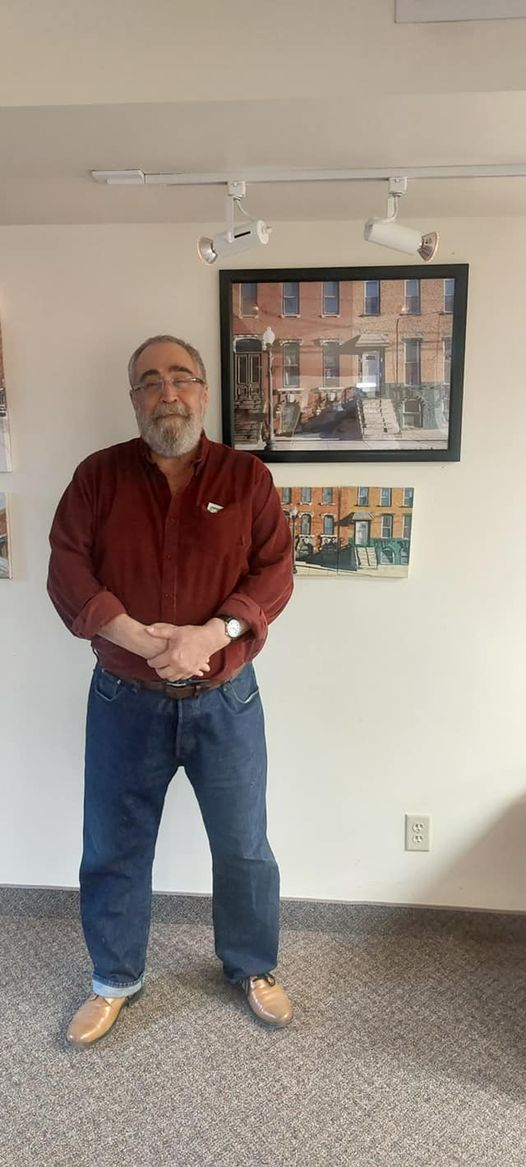
John Hernandez (JH): Hi Les! Congratulations on being named the Bear World Icon for 2024! And thanks for joining me. You previously told me that you found the bear community through the first issue of Bear Magazinein San Francisco. Can you tell me a bit about that and your experiences in the early bear scene?
Les K. Wright (LW): Thank you! When I came across BEAR Magazine Issue 1, there was no bear community yet. The magazine was typical of the “zines of the 1980s—made on a photocopier, 8 1/2” x 11” paper folded in half and sold in local gay bookstores in San Francisco. ‘Zines were a way to communicate among people with a special interest in common.
At about the same time, John Musselman, my favorite waiter at Welcome Home, a restaurant on Castro Street, told me about a new sex party group called Bear Hugs, where I’d meet the kind of men I was attracted to.
I became an eager regular participant in the sex parties. I answered an ad in BEAR #1 and met a long-term partner. The Internet was new, lots of guys interested in bearish guys worked in high tech, BBS’s (Bulletin Board System) were the way they communicated. Rick Redewell opened the first Lonestar Saloon as a place for bears to meet. It was in the South of Market leather bar and sex club neighborhood. Very rapidly, the Bear Hug crowd, the local readers of BEAR (it was still a local ‘zine at this point), and the computer geeks found each other and joined in a spirit of camaraderie.
At the start of the bear phenomenon, as we began to have a sense that we were more than a bunch of gay men calling ourselves bears, I dubbed it “beardom.” Bear community came out of this social networking.
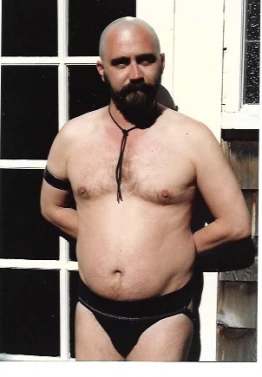
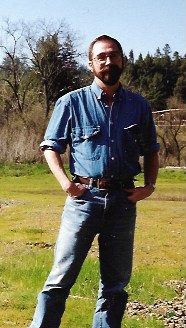
JH: Fascinating. And based on your observations, what do you think sparked the rise of the bear community?
LW: In the mid-1980s I observed several things converging which gave birth to the bear community. The AIDS epidemic was raging–heavier bodies became eroticized, replacing the slender clone ideal. (Slender bodies suggested AIDS-wasting syndrome and heavier bodies were seen as a sign of health.) Bearish men had typically been banned from bathhouses and sex clubs. When the bathhouses were shut down, private sex groups formed, and these men continued to exclude bearish men. The Bear Hug play party offered a sexual outlet for us. In response to the fashion of color-coded hankies, which communicated a guy’s sexual tastes in some detail, some guys began putting a small stuffed bear in their back pocket. It was a “camping” of the hanky code and signaled “I like to cuddle.” Everything I have mentioned so far here transformed a bunch of gay outsiders into a loosely cohesive “community of insiders.”
JH: What made you start documenting bear culture and history?
LW: When I came out, I followed the gay history being published in the gay press (notably, Gay Sunshine [San Francisco], Fag Rag [Boston], The Advocate [when it was agay movement newspaper], and The Body Politic [Toronto]) and was doing research on my own. As a graduate student at the University of Tübingen I remember discovering Karl-Heinrich Ulrichs and his theory that what we now call a gay man was a person born in a man’s body but with a woman’s soul, and vice versa for lesbians. He coined the term for this “Urning” (“Uranian” in English). Reading his original works, printed in German Fraktur script, was rough going. I continued to study gay history. In 1985 I was one of the founding members of the GLBT Historical Society San Francisco, created out of the urgency of realizing we needed to preserve San Francisco gay history before it vanished—as gay men were dying from AIDS, their biological families were showing up and throwing out all of their personal possessions.
At this time, I was also invited by Allan Bérubé to join the San Francisco Gay and Lesbian History Project. At the time he was researching gays and lesbians in the US military during World War II. This resulted in his now seminal gay history book Coming Out Under Fire, for which he was awarded a MacArthur genius grant. I learned how to do “grassroots history” from Allan. As the bear phenomenon started happening, I realized it was not just one season’s fashion in the San Francisco gay community. I realized I was witnessing and participating in something of greater significance. I became a careful observer, kept notes, began writing about it, and started collecting all the ephemera of bear events, clubs, merchandizing, and the like. As an acknowledgement of my experiences in the San Francisco Gay and Lesbian History Project, I named my work the Bear History Project.

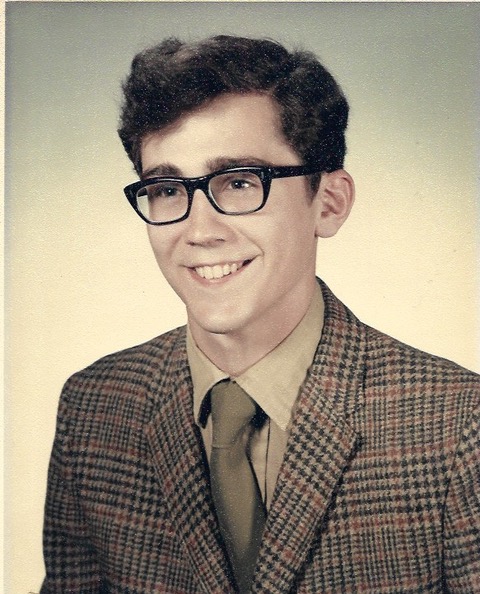
JH: You are being honored as the Bear World Icon because you have taken the initiative to be the record keeper of our community and have written three books, with a fourth on the way, to preserve that for all of us. So I ask – who were your mentors, if any? And who do you think are some of the key players in bear history?
LW: I mentioned my mentor Allan Bérubé, who taught me how to do “grassroots history.” Jack Fritscher was also a mentor. Jack had preceded me in parlaying his life as an ex-academic into a professional life as a participant-observer and documenter of a marginal gay subculture. Jack is easily the most important documenter of the leather/kink community. I found myself treading a remarkable similar path–within the bear community. (Jack has been an ardent supporter, admirer, and cheerleader of my bear history work.)
There are so many individuals who have played an essential role, who I would consider to be key players, in our history:
Jack Fritscher has long been a central figure in the leather community. He was the editor of Drummer magazine when bears began to emerge. Prior to that he had featured bearish men in Drummer, in his own photography, and used the term “bear” before we self-defining bears existed. Jack published my essay “The Sociology of the Urban Gay Bear” as the Drummer cover article in 1990. This was the first published article on gay bears.
Lurch was the first president of the Bears of San Francisco. The BOSF put on the annual IBR—International Bear Rendezvous. Lurch traveled far and wide, promoting this new bear community. (His story will be included in Bear Book III.)
Two early titleholders from IBR:
Craig Byrnes was the first Mr. International Bear titleholder and traveled extensively promoting early bear community. He is the creator of the International Bear Brotherhood Flag.
Ali Lopez is the first bear of color titleholder. He has continued to promote an inclusive bear and leather community, promote visibility and acceptance of bears of color, and continues to serve as a volunteer for many humanistic causes.
Steve Dyer was the creator of the BML—Bears Mailing List—the first Internet communication system for bears. The BML was the first international network. It fostered many personal friendships, romantic relationships, and brought travelers together with hosts who welcomed the travelers to stay at their homes.
Richard Bulger was the founder of BEAR Magazine.
John Burrows (along with Dave Thompson and myself) confounded the Provincetown Bears. John went on to found Provincetown Bear Week on his own. John always kept the Ptown Bear Week welcoming to all bears.
Charlie Hopwell has long been an important leader in the Chesapeake Bay Bears, has traveled worldwide to promote the bear community, and remains instrumental in the Washington, DC—Maryland—Virginia bear community. (His story will be included in Bear Book III, and a collection of his writings will be published by Bearskin Lodge Press.)
Freddy Freeman is a director at Easton Mountain, a gay men’s spiritual retreat center in upstate New York. He is the founder of the Bear Your Soul community and hosts a range of gay groups, such as leathermen and polyamorous men. Easton Mountain is the East Coast home of Body Electric. (The story of Freddy and Easton Mountain story will be included in Bear Book III.)
Three Europeans who introduced bear community to Europe:
Michael Zgonjanin brought the bear idea to Germany. He is currently the editor of BOX magazine, which focuses on the leather and bear communities.
Jacques Zonne brought the bear idea to The Netherlands. He remains involved in the Dutch bear community and is a vociferous advocate for the banning of “conversion therapy.”
Mark Ames spread the idea of bear community in London, founding XXL, the first bear bar in London. He has been a key documenter of the London bear community.
Key figures emerging more recently in the diversification of the bear community include:
J. Tebias Perry is pivotal presence in the black and leather bear communities;
Sunny Haynes is a prominent, active mama bear;
Kylar Maldonado is an out-and-proud activist transbear.
Richard Jones (cofounder of Gray Jones Media and founding editor of Bear World Magazine) and John Hernandez (current editor of World Bear Magazine) have carried the torch for the past ten years of informing, documenting, and promoting the bear community and bear culture worldwide. Richard and John have been indispensable in bringing the international bear community together. Bear World Magazine’s coverage of current events, fashions, personalities, and bear popular culture–as well as in-depth coverage of issues within the bear community–has established BWM as the publication of record for our community. (I look forward to interviewing you both for Bear Book III.)
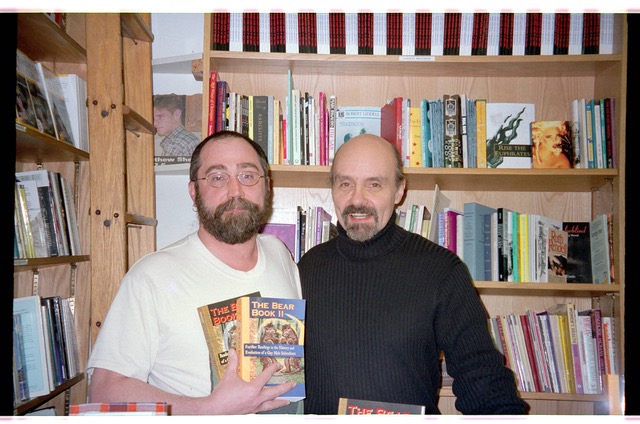
JH: That is a wonderfully comprehensive guide to who’s who in the bear community and I humbly thank you for including myself and Richard on that esteemed list, many of whom we have covered in these ‘pages’. We are so looking forward to Bear Book III and are honored to be a part of it. Speaking of which, we have previously put out a call for submissions on the Bear Book III and have asked interested readers to participate in the Bear History Project International (BHPI). How are both projects progressing?
LW: It’s been three years since the first zoom meeting of bears interested in bringing the Bear History Project back to life. Spreading the word is a slow process. The BHPI had its official public coming out at Provincetown Bear Week 2023. Since then we have grown into an impressive group of gifted and committed individuals who possess necessary professional or technical skills. We are currently awaiting approval of our application to become a 501(c) nonprofit (expected by the time this interview is published). The BHPI collection will be permanently housed at the Leather Archives & Museum in Chicago. We are starting with a manageable workload–actively documenting US bear history while actively developing contacts with groups and individuals outside the US. Our monthly meetings are open to anyone who wishes to come (https://www.facebook.com/groups/bearhistoryproject ). We particularly welcome anyone who wishes to become actively involved in our work.
Bear Book III is also progressing slowly. I envision it as a comprehensive history of the development of bear identity, community, and culture since the publication of Bear Book II. Despite the public call, which BWM has publicized, word gets out slowly. It takes time to build an informal network, especially for a project of this scope. Individuals often do not see themselves as playing a significant role in bear history. However, we are continuing to collect submissions until December 31, 2024. (Please direct all communications, including submissions to leskwright53@gmail.com).
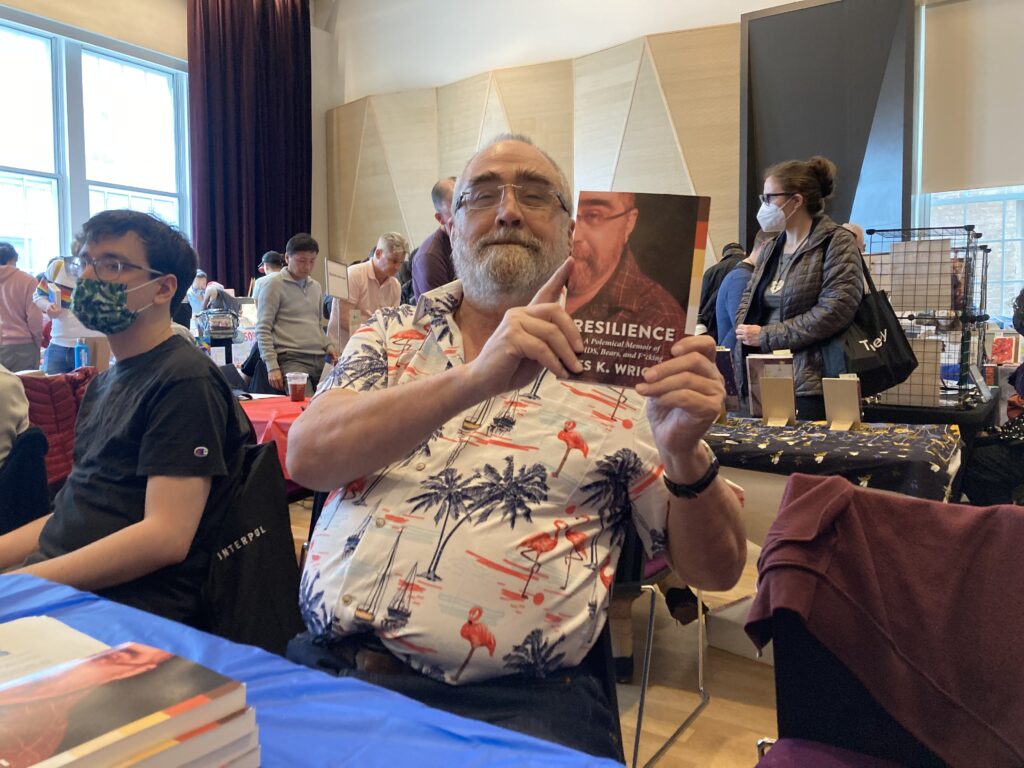
JH: You took a step back from the bear community in the early 2000s due to the rise of the muscle bears and the schism it caused in the community. Now that you’ve rejoined bear life do you feel that rift has been mended and what are your thoughts on the modern bear community?
LW: The original rift, sometimes called “Bear Wars,” occurred with the emergence of muscle bears. I wasn’t the only bear who took offense at being told I was no longer a “real” bear or seeing the spirit of inclusivity being threatened. Some early bears walked away and never looked back. (I have a close friend who is still bitter and unforgiving about this.) A similar phenomenon had occurred earlier on in the leather community. That caused me to step away from that community as well.
Some of the good news, as I later saw, is that many bears never lost the faith and have carried on. They are among our brightest beacons today. Some of the good news is that most of those early muscles bears eventually “got over themselves” and saw themselves as bears among bears, and not bears above bears. I have been told anecdotes of early muscle bears who demanded they be treated as royalty; I have been told anecdotes of muscle bears at Ptown Bear Week being disarmingly approachable. (It’s harder to get laid when you’re up on a pedestal.)
For me the best news is that we are learning from our mistakes and maturing as a community. Our sense of inclusivity is an ideal, and our practice continues to hit rough patches as we try to practice it. I believe the muscle bear rift has been mended. The older, established bear community is now being challenged to live up that ideal as more bears of color, transbears, mama bears, and other self-identifying bears are seeking a home in our community. If everyone was just like me, I’d be bored to tears for the rest of my life. I seem to be one of those “radical diversity freaks” who finds that variety is the spice of life. I am very heartened by the direction in which the bear community is now evolving.
JH: I agree. BWM has long been a champion of diversity and inclusion in our community as well and it’s great to see us heading in that direction.
LW: History does not unfold in a linear fashion. There are always surprises along the way, goals shift, and hindsight makes things look different. From inside the bear community, it looks like we will continue to increase in numbers and expand our diversity umbrella.
Bears also offer a fresh model for the larger queer community, both in our “inclusivity,” the relatively higher level of acceptance, and as the embodiment of a new form of (“non-toxic”) masculinity.
But we are living in very dangerous times. As much of the world, including the US, is turning increasingly to authoritarianism and demonizing anyone not just like them, we queer folk have become a particularly preferred scapegoat. Times are going to get tougher. It is my hope that we will pull closer together, that our ideal of inclusivity will guide us, and we will continue to set an example for the larger community as we all deal with whatever lies ahead of us.
JH: Let us hope. There is nothing we cannot withstand if we pull together as a community. Thank you, Les, for taking the time to chat and for all the amazing work you have done and continue to do. We’ll see you at the BWM Awards in July!
